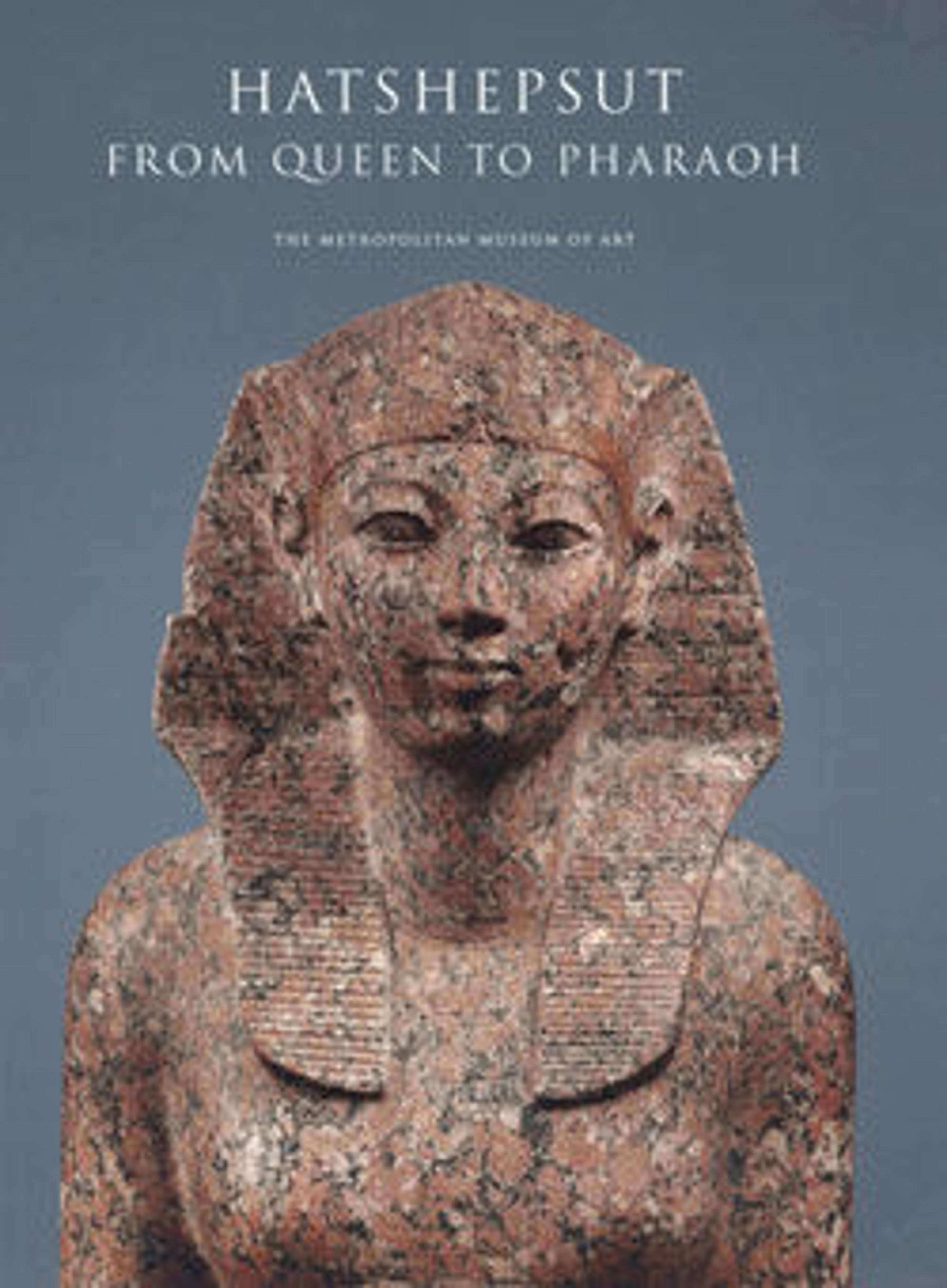Head from an Osiride Statue of Hatshepsut
This head originally belonged to one of the Osiride statues that were carved in high relief in niches along the rear wall of the upper terrace of Hatshepsut's temple at Deir el Bahri. Hatshepsut wears the Double Crown of Upper and Lower Egypt suggesting that the head was from a figure in one of the niches on the northern side of the terrace. Another head, 31.3.163, wears the White Crown of Upper Egypt and came from a niche on the southern side.
These Osiride figures were architectural accents rather than freestanding statues and were carved from the same limestone blocks that were used to construct the temple itself. Four Osiride statues decorated the corners of the temple's shrine of Amun (31.3.153–.155), and a series of much larger statues were attached to the pillars at the front of the upper terrace (31.3.156, 31.3.158, 31.3.159).
These Osiride figures were architectural accents rather than freestanding statues and were carved from the same limestone blocks that were used to construct the temple itself. Four Osiride statues decorated the corners of the temple's shrine of Amun (31.3.153–.155), and a series of much larger statues were attached to the pillars at the front of the upper terrace (31.3.156, 31.3.158, 31.3.159).
Artwork Details
- Title:Head from an Osiride Statue of Hatshepsut
- Period:New Kingdom
- Dynasty:Dynasty 18
- Reign:Joint reign of Hatshepsut and Thutmose III
- Date:ca. 1479–1458 B.C.
- Geography:From Egypt, Upper Egypt, Thebes, Deir el-Bahri, Jaw from "Hatshepsut Hole"/rest from Senenmut Quarry, MMA excavations, 1922–23/1926–28
- Medium:Limestone, paint
- Dimensions:h. 126.5 cm (49 13/16 in); w. 34.9 cm (13 3/4 in); d. 59.4 cm (23 in)
- Credit Line:Rogers Fund, 1931
- Object Number:31.3.164
- Curatorial Department: Egyptian Art
More Artwork
Research Resources
The Met provides unparalleled resources for research and welcomes an international community of students and scholars. The Met's Open Access API is where creators and researchers can connect to the The Met collection. Open Access data and public domain images are available for unrestricted commercial and noncommercial use without permission or fee.
To request images under copyright and other restrictions, please use this Image Request form.
Feedback
We continue to research and examine historical and cultural context for objects in The Met collection. If you have comments or questions about this object record, please contact us using the form below. The Museum looks forward to receiving your comments.
